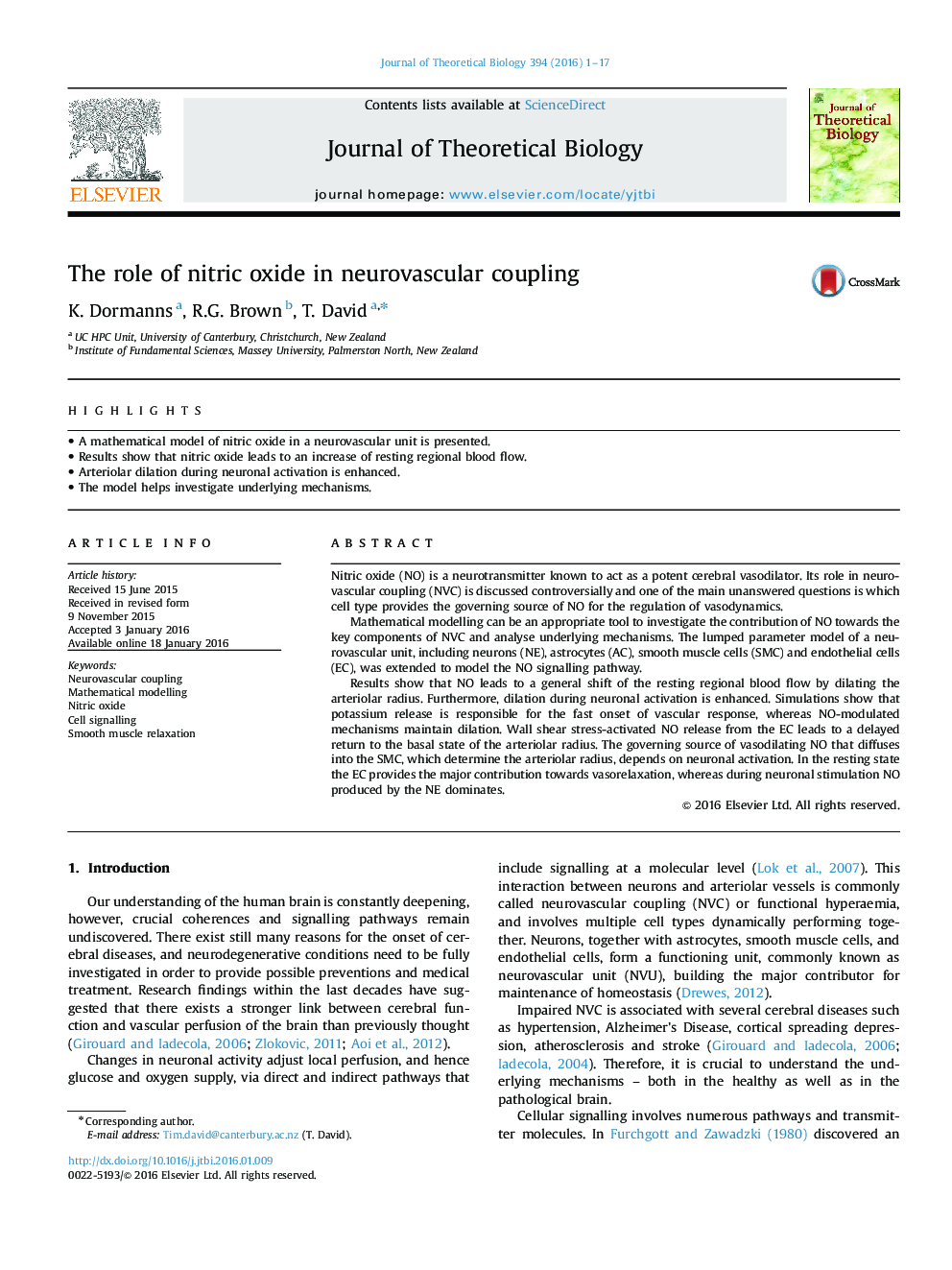| کد مقاله | کد نشریه | سال انتشار | مقاله انگلیسی | نسخه تمام متن |
|---|---|---|---|---|
| 4495880 | 1623816 | 2016 | 17 صفحه PDF | دانلود رایگان |
• A mathematical model of nitric oxide in a neurovascular unit is presented.
• Results show that nitric oxide leads to an increase of resting regional blood flow.
• Arteriolar dilation during neuronal activation is enhanced.
• The model helps investigate underlying mechanisms.
Nitric oxide (NO) is a neurotransmitter known to act as a potent cerebral vasodilator. Its role in neurovascular coupling (NVC) is discussed controversially and one of the main unanswered questions is which cell type provides the governing source of NO for the regulation of vasodynamics.Mathematical modelling can be an appropriate tool to investigate the contribution of NO towards the key components of NVC and analyse underlying mechanisms. The lumped parameter model of a neurovascular unit, including neurons (NE), astrocytes (AC), smooth muscle cells (SMC) and endothelial cells (EC), was extended to model the NO signalling pathway.Results show that NO leads to a general shift of the resting regional blood flow by dilating the arteriolar radius. Furthermore, dilation during neuronal activation is enhanced. Simulations show that potassium release is responsible for the fast onset of vascular response, whereas NO-modulated mechanisms maintain dilation. Wall shear stress-activated NO release from the EC leads to a delayed return to the basal state of the arteriolar radius. The governing source of vasodilating NO that diffuses into the SMC, which determine the arteriolar radius, depends on neuronal activation. In the resting state the EC provides the major contribution towards vasorelaxation, whereas during neuronal stimulation NO produced by the NE dominates.
Journal: Journal of Theoretical Biology - Volume 394, 7 April 2016, Pages 1–17
